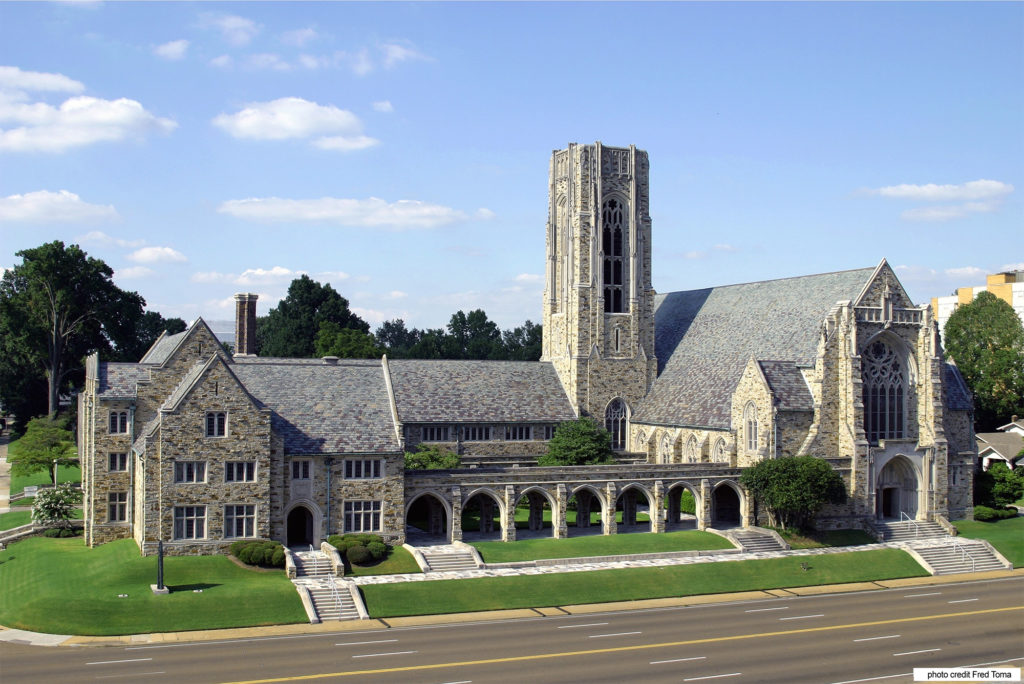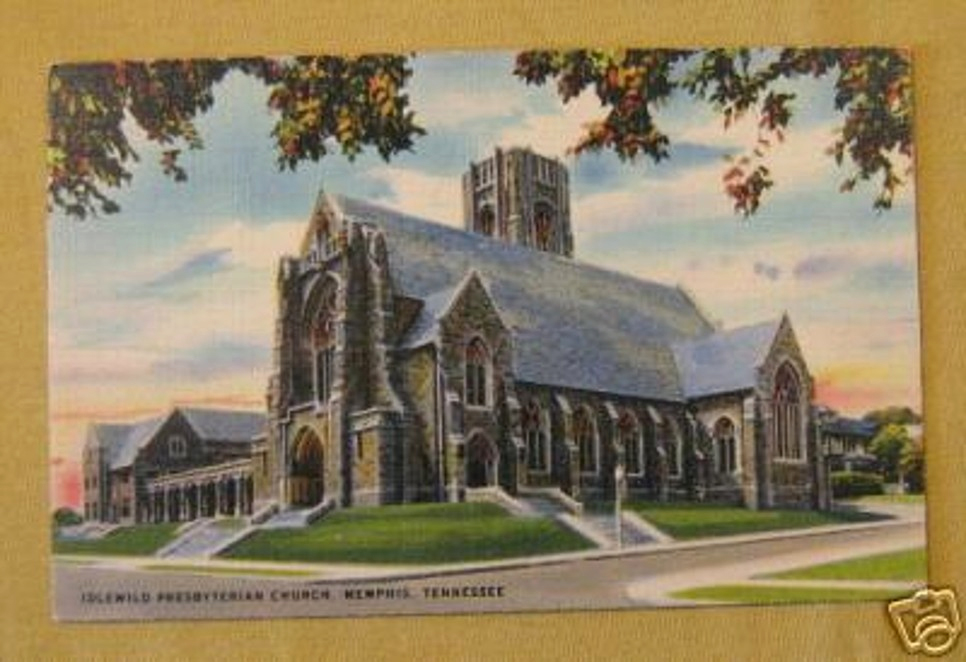Idlewild Presbyterian Church is a progressive urban church with a commitment to the residents of Memphis. Blessed with a tradition of energetic and inquiring members, it has been in the forefront of Christian formation, worship, nurture, outreach, and social change and for more than five generations.
The church was formed in 1891. By 1921, with a membership of 853, the congregation had already outgrown its second building and the current location was selected. Today, it remains a vibrant urban church with more than 1,400 members

In the 1940s, Idlewild and Bethel Presbyterian churches began the Bethel Day Nursery to care for children of black working mothers. (The nursery operated until the mid1990s.) This nurtured close cooperation with the black congregation.
As early as 1952, the first recreation programs were started for the purpose of offering Christian recreation for all ages, then quickly grew to include sports teams for young people throughout the city.
The Sixties were a time of social upheaval, with the Civil Rights movement organizing for social justice in the South. Idlewild exerted leadership in the community as tensions mounted. Our pastor, Dr. Paul Tudor Jones, and Idlewild members worked through the Memphis Committee on Community Relations as the public library, Memphis State University, the zoo, parks, museums, buses and restaurants were integrated. Idlewild helped to lead the faith community and was one of the few venues where integrated meetings could be held. In the aftermath of the assassination of Dr. Martin Luther King Jr., Idlewild was active in the formation of community programs including the Metropolitan Interfaith Association (MIFA) and Adopt-A-School tutoring program.
In 1961, a kindergarten was started. Then, in the aftermath of racial strife in the late 60s, the Idlewild Day Care Center opened to offer child care to working mothers with fees based on the family’s ability to pay. Today, Idlewild is home to the Early Enrichment Center (EEC), a part of the Children and Family Enrichment (CAFE), caring for children from birth to 4 years.
The Jones Education Building was erected in early 1960 to house more classrooms, the Day Care center, and a gym for the expanding recreation ministry. The building was completely renovated in 2019.
Women have always held leadership positions at Idlewild. After the General Assembly of the Presbyterian Church U.S. approved the ordination of women in 1964, Idlewild ordained its first women deacons in 1968, elders in 1974, and in 1976 called its first female associate minister.
In the 1990s Idlewild founded Idlewild Court, a transitional housing development administered by MIFA; brought RBI (Return Baseball to the Inner City) to Memphis; and opened Samaritan Counseling Center. More recently, the church has nurtured a strong GLBTQ community connection; partnered with our sister church, Juan G. Hall Presbyterian Church in Cardenas, Cuba, which includes regular fellowship and support visits; and formed an ongoing affiliation with Living Waters for the World, through which we install and support clean water systems in Ghana and Cuba.
Idlewild continues to serve Memphis, the greater community, and the world in ways that nurture the spirit, feeds the body, and inspire the soul. Current ministries include More Than A Meal, Room in the Inn, the EEC, global outreach, Adopt-A-School tutoring, Christian formation, sports programs, and traditional worship.

Idlewild’s Gothic building was designed by award-winning architect George Awsumb, who believed “good architecture should satisfy man’s physical, mental and spiritual needs in such a way as to add to the general welfare and happiness of mankind.” The cornerstone was laid in 1926, and it was officially completed in 1928, just before the volatile economic times of the Great Depression. Since Union Avenue was then a major highway, transients and homeless people frequently stopped at the church for help.
When it opened, it was called “the South’s Cathedral of Presbyterianism.” Inside and out, the architectural integrity of Idlewild creates a beautiful space for worship, prayer, study and ministry.